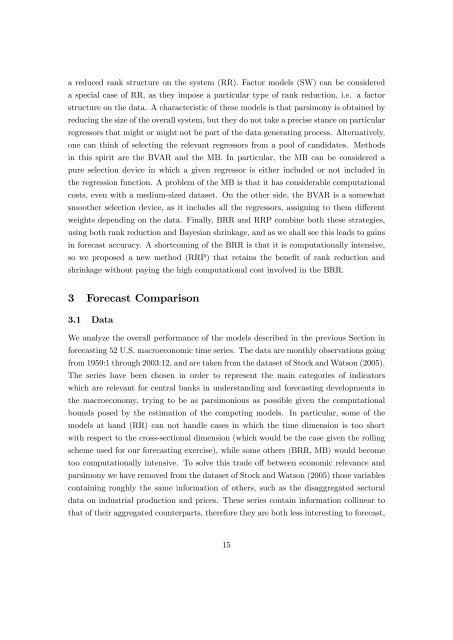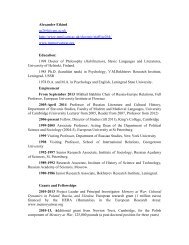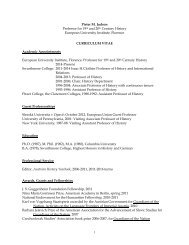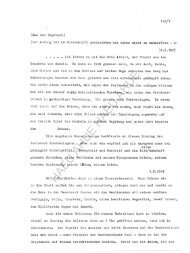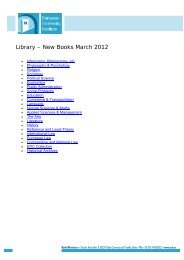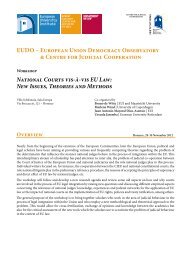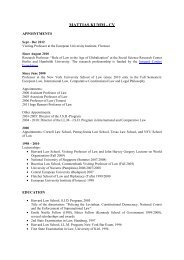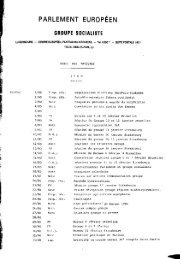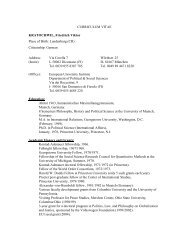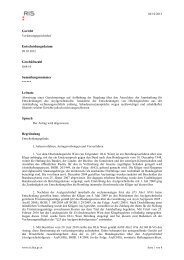Forecasting Large Datasets with Reduced Rank Multivariate Models
Forecasting Large Datasets with Reduced Rank Multivariate Models
Forecasting Large Datasets with Reduced Rank Multivariate Models
Create successful ePaper yourself
Turn your PDF publications into a flip-book with our unique Google optimized e-Paper software.
a reduced rank structure on the system (RR). Factor models (SW) can be considered<br />
a special case of RR, as they impose a particular type of rank reduction, i.e. a factor<br />
structure on the data. A characteristic of these models is that parsimony is obtained by<br />
reducing the size of the overall system, but they do not take a precise stance on particular<br />
regressors that might or might not be part of the data generating process. Alternatively,<br />
one can think of selecting the relevant regressors from a pool of candidates. Methods<br />
in this spirit are the BVAR and the MB. In particular, the MB can be considered a<br />
pure selection device in which a given regressor is either included or not included in<br />
the regression function. A problem of the MB is that it has considerable computational<br />
costs, even <strong>with</strong> a medium-sized dataset. On the other side, the BVAR is a somewhat<br />
smoother selection device, as it includes all the regressors, assigning to them di¤erent<br />
weights depending on the data. Finally, BRR and RRP combine both these strategies,<br />
using both rank reduction and Bayesian shrinkage, and as we shall see this leads to gains<br />
in forecast accuracy. A shortcoming of the BRR is that it is computationally intensive,<br />
so we proposed a new method (RRP) that retains the bene…t of rank reduction and<br />
shrinkage <strong>with</strong>out paying the high computational cost involved in the BRR.<br />
3 Forecast Comparison<br />
3.1 Data<br />
We analyze the overall performance of the models described in the previous Section in<br />
forecasting 52 U.S. macroeconomic time series. The data are monthly observations going<br />
from 1959:1 through 2003:12, and are taken from the dataset of Stock and Watson (2005).<br />
The series have been chosen in order to represent the main categories of indicators<br />
which are relevant for central banks in understanding and forecasting developments in<br />
the macroeconomy, trying to be as parsimonious as possible given the computational<br />
bounds posed by the estimation of the competing models. In particular, some of the<br />
models at hand (RR) can not handle cases in which the time dimension is too short<br />
<strong>with</strong> respect to the cross-sectional dimension (which would be the case given the rolling<br />
scheme used for our forecasting exercise), while some others (BRR, MB) would become<br />
too computationally intensive. To solve this trade o¤ between economic relevance and<br />
parsimony we have removed from the dataset of Stock and Watson (2005) those variables<br />
containing roughly the same information of others, such as the disaggregated sectoral<br />
data on industrial production and prices. These series contain information collinear to<br />
that of their aggregated counterparts, therefore they are both less interesting to forecast,<br />
15


